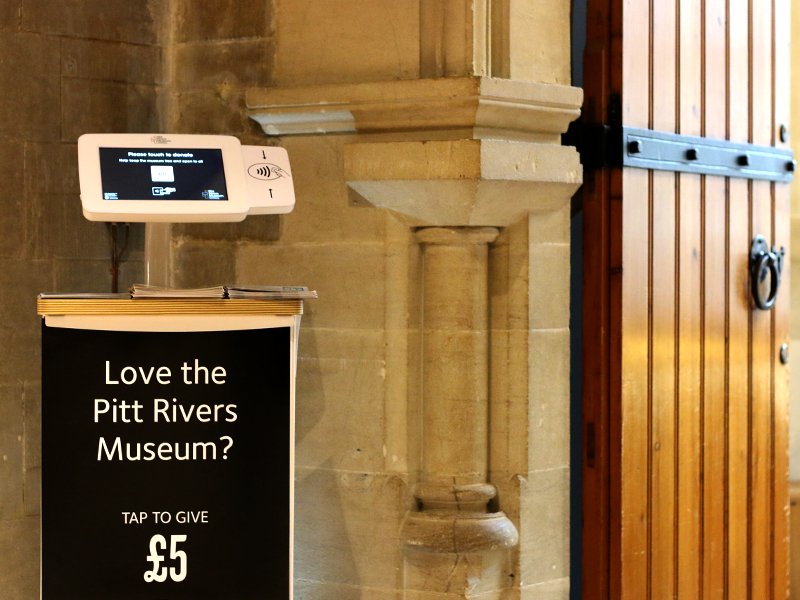Visitors to the University of Oxford's gardens, libraries and museums can now use their contactless cards to make donations, following the launch of a six-month pilot scheme.
Contactless payment terminals have recently been installed at six sites across the city: the Pitt Rivers Museum, the Museum of Natural History, the Ashmolean Museum, the History of Science Museum, the Weston Library and the Harcourt Arboretum. A simple touch-screen interface invites visitors to tap their contactless debit or credit card to make a £5 donation to support the institution's work.

Contactless donation point at the Pitt Rivers Museum
Over the past few years, contactless has seen a huge growth in usage and is becoming increasingly accepted as a way to conduct small-scale financial transactions. The average contactless transaction value now stands at around £9, with contactless spending amounting to £69 billion in 2018, up by nearly a third on the previous year.
As contactless technology gains in popularity, there has been a corresponding decline in the number of people carrying cash. For the six sites participating in the trial, the installation of contactless terminals ensures that anyone who wishes to give now has the opportunity to do so.
Visitor donations are vital to the Ashmolean, representing an increasingly important source of income for the museum.Emma Hermon
'The introduction of contactless donations aims to make it even easier for our visitors to support the activities of Oxford’s gardens, libraries and museums by using technology that is becoming more and more widespread in the UK,' says Helen Adams, Digital Engagement Lead for the Gardens, Libraries and Museums. 'As well as looking at any increase in giving, we'll also be able to evaluate if and how the devices and interactivity form part of the visitor experience.'
The pilot follows the successful roll-out of similar devices in institutions including the National Museum of Scotland, the Barbican, Tate Modern, the National Gallery and The Natural History Museum. A number of charities have also taken the opportunity to offer innovative uses of contactless payment points, including the Church of England, where the technology was trialled in lieu of 'passing the plate'.
'Visitor donations are vital to the Ashmolean, representing an increasingly important source of income for the museum,' says Emma Hermon, Head of Visitor Experience at the Ashmolean Museum. 'We feel that our visitors have responded well to the new devices, and hope to see visitor donations grow over the course of the trial.'